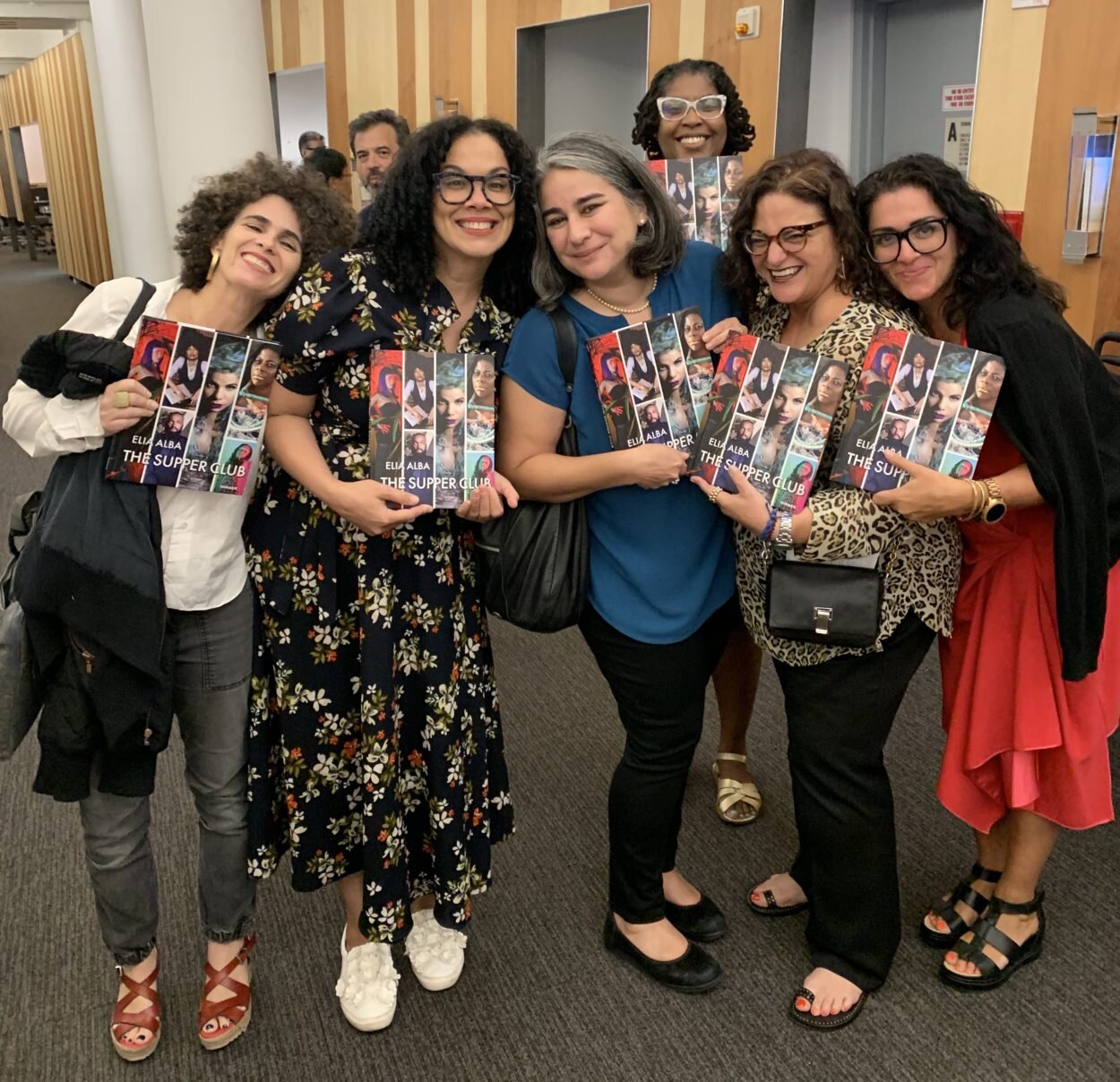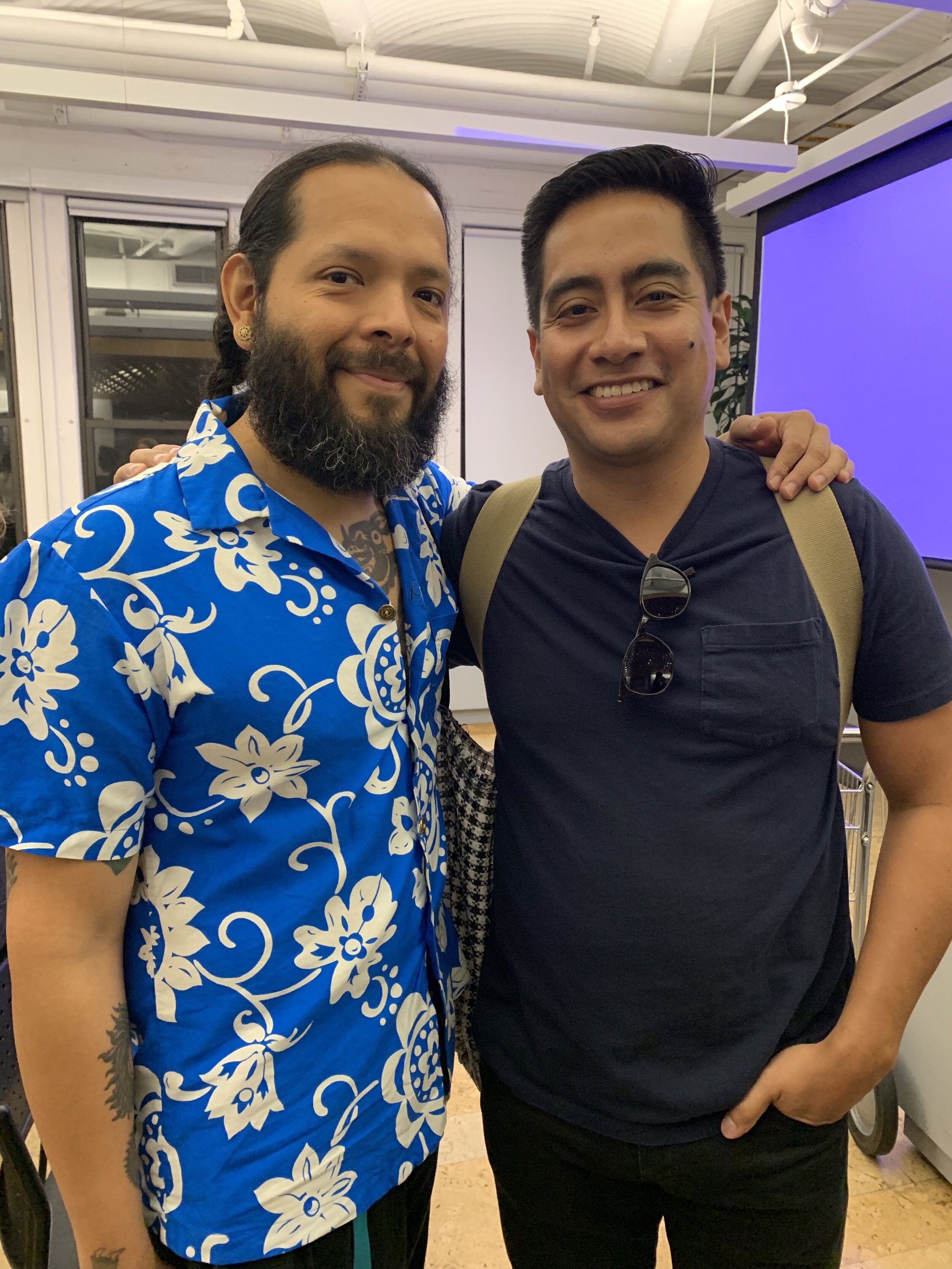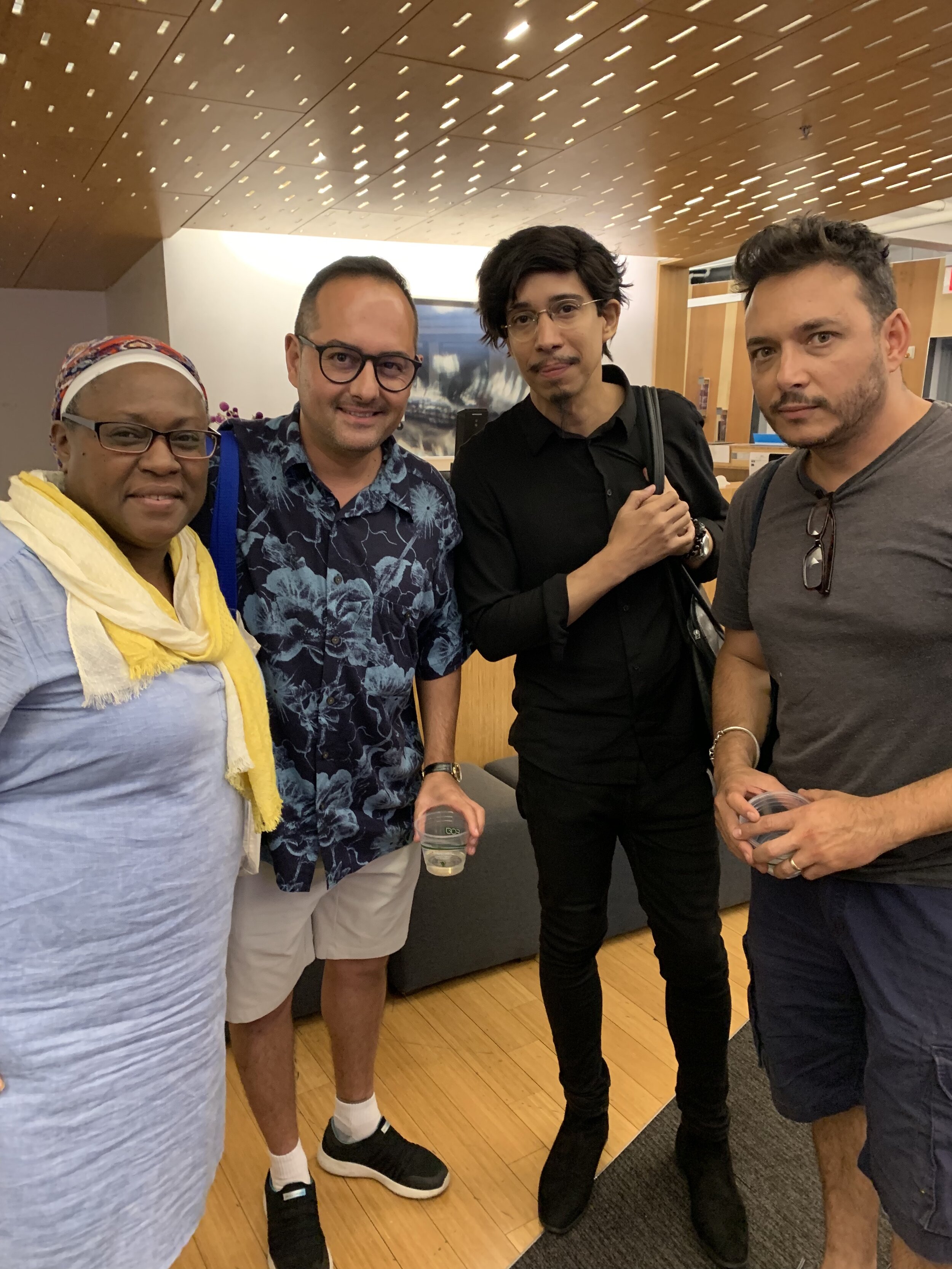How do Latinx artists supersede narrow categories of identification? How are they anchoring race/class and foregrounding the voices of Black and Brown Latinx artists and experiences? How is the Latinx art movement expanding the conversation on Latinidad? The speakers for this edition of The Supper Club include, Elia Alba, Juana Valdés, Naiomy Guerrero, and Guadalupe Maravilla.
Artists
Elia Alba was born in Brooklyn, New York. She received her Bachelor of Arts from Hunter College in 1994 and completed the Whitney Museum Independent Study Program in 2001. She has exhibited throughout the United States and abroad. Those include The Rhode Island School of Design Museum; Stedelijk Museum, Amsterdam; The Science Museum, London; ITAU Cultural Institute, Sao Paolo; National Museum of Art, Reina Sofía, Madrid and the 10th Havana Biennial. She is a recipient of numerous awards and residencies, for example, Studio Museum in Harlem Artist-in-Residence Program in 1999; New York Foundation for the Arts Grant, Crafts 2002 and Photography 2008; Pollack-Krasner Foundation Grant, 2002 and Joan Mitchell Foundation Grant 2002 and 2008; Lower Manhattan Cultural Council (LMCC) Workspace Program, 2009, and Recess Analog, 2012. Her work is in the collection of the Smithsonian Museum of Art, El Museo del Barrio, Lowe Art Museum to name a few. For the past 6 years, she has been working on a project titled “The Supper Club. The project brings together artists, scholars, and performers of diasporic cultures, through photography, food, and dialogue to examine race and culture in the United States. A book on The Supper Club, produced by The Shelley & Donald Rubin Foundation and published by Hirmer is scheduled for Spring 2019. She is currently Artist-in-Residence at The Andrew Freeman Home in the Bronx.
Juana Valdés is a multi-disciplinary artist whose work traces, recollects, and records her own personal experience of migration. Her artwork is informed by her Afro-Cuban ethnicity and the experience of growing up in America. Throughout her career, Valdés has participated in a range of exhibitions and residencies most currently at the European Keramic Work Center in the Netherlands (2012), the Jamaica Center for Arts and Learning (2009), the Artist Residency at the Center for Book Arts (2007), and the Smack Mellon Studio Program (2004). Past exhibitions include a solo show at SENSEI Gallery as part of the SENSEI Exchange Series Part 008: In the Fold in New York (2013), and traveling exhibitions Multiplicity: Contemporary Ceramic Sculpture (2007-08) and Multiple, Limited, Unique: Selections from the Permanent Collection of the Center for Book Arts (2011-2013).
Guadalupe Maravilla is a transdisciplinary artist who was part of the first wave of undocumented children to arrive at the United States border in the 1980s from Central America. In 2016, as a gesture of solidarity with his undocumented father—who uses Maravilla as his last name in his fake identity—Irvin Morazan changed his name to Guadalupe Maravilla. As an homage to his own migratory history, and to that of others, Maravilla makes work that acknowledges the historical and contemporary contexts of immigrant culture, notably belonging to Latinx communities. Maravilla gained notoriety for his performances which are expansive and immersive, incorporating choreographed rituals, hand-made costumery, fusion music, smell, theatre, and audience participation. He currently lives in Brooklyn, New York, and Richmond, Virginia, where he is an Assistant professor at VCU. He received his Bachelor in Fine Arts from the School of Visual Arts, and his Master in Fine Arts from Hunter College in New York.
Naiomy Guerrero is a Dominican-American art history scholar and arts equity advocate. She was raised traveling between the Bronx, Washington Heights, and the Dominican Republic. Her research focuses on highlighting contemporary Latinx artists born or long living in the U.S., their contributions to the cannon of U.S. art history, and development of the Latinx art market. Guerrero’s research has been shared by NPR Latino, Artsy, and Teen Vogue. Guerrero is the inaugural curatorial fellow of the Pérez Art Museum Miami’s Diversifying Art Museum Leadership Initiative. The two-year fellowship, endowed by the Walton Family Foundation and the Ford Foundation, aims to offer curatorial training to young professionals from historically underrepresented groups in curatorial and museum leadership.
The Shelley & Donald Rubin Foundation believes in art as a cornerstone of cohesive, resilient communities and greater participation in civic life. In its mission to make art available to the broader public, in particular to underserved communities, the Foundation provides direct support to and facilitates partnerships between, cultural organizations and advocates of social justice across the public and private sectors. Through grantmaking, the Foundation supports cross-disciplinary work connecting art with social justice via experimental collaborations, as well as extending cultural resources to organizations and areas of New York City in need.
Event Recap
Our panel Tuesday, -The Supper Club – Reflections on the Landscape of Latinx Art- gave us a chance to discuss Elia Alba’s important book. The panel with artists Juana Valdes and Guadalupe Maravilla, and curator Naiomy Guerrero opened up the conversation on how Alba’s Supper Club was groundbreaking because it gave space to an intergenerational group of artists with a spectrum of racial, sexual and ethnic identities to talk about the issues in their respective and collective art worlds. These safe and welcoming spaces for intergenerational conversations among artists of color are indeed rare.
Juana Valdes then turned the conversation to the term Latinx and what she calls it’s “X-factor.” “The “X” in Latinx becomes more than a way to hold a place/space that’s non-gender binary but also a place to hold other “ness.” It allows for the Afro or Black, Indigenous, Chinese or what “other” makes up the other part of the Latino ethnicity, she says. She also shared some artwork where she uses bone china to discuss cultural memory, race, labor, and displacement.
Then native New Yorker and art world maverick Naiomy Guerrero visiting from the Perez Art Museum in Miami shared a poem with us alluding to frustrations about the moral schisms of working in the art world especially considering our current political state of affairs. Below is an excerpt.
“I think abt the kind of freedom required to put your bare foot on the back of my arm rest the way that woman did on my flight from O’hare. Before you ask, yes, she was. i miss the block. i wanna hug it the way pushers do even on those nights where the temperature dips below zero like the cucharon do when mamis trynna get the asopao out. I sit in curatorial meetings discussing exhibition opening and closings and my mind drifts off to the 3,000 children in the detención center 10 miles away in homestead. i requested to join a fb group that stands outside the detención center in protest. it took 48 hours for them to accept me into the group. i wanted to buy pillows and water and take it to them so maybe they know we give a fuck on the other side of the fence. but i read that anything sent is thrown away and what the group needs most is money to help pay for legal fees to help get these babies out. babies. money. damn and i’m ten years into this career still broke with this art degree same way these artists be. i wonder if you need a visa to visit the art world. do they got salty beaches or bridges that span across boroughs? is the rsvp closed or maybe theres a secret phrase you gotta whisper to someone standing idly on the sidewalk outside of an opening and tada, you’re in. how many years does it take, exactly, to take the citizenship exam in your native language so you can be a citizen of the art world.”
Then there was Guadalupe Maravilla‘s presentation on his work, his migration story and the implications of his battle with cancer. After contracting cancer Maravilla began visiting shamans around the world. He gravitated toward sound therapy and this became part of his art practice. He now gives sound baths for people with undocumented status. He believes the stress and trauma he experienced as a refugee fleeing civil war in El Salvador manifested as a cancerous tumor. Pictured above is Maravilla discussing his performance as a futuristic coyote on the NYC Panorama at the Queens Museum.








